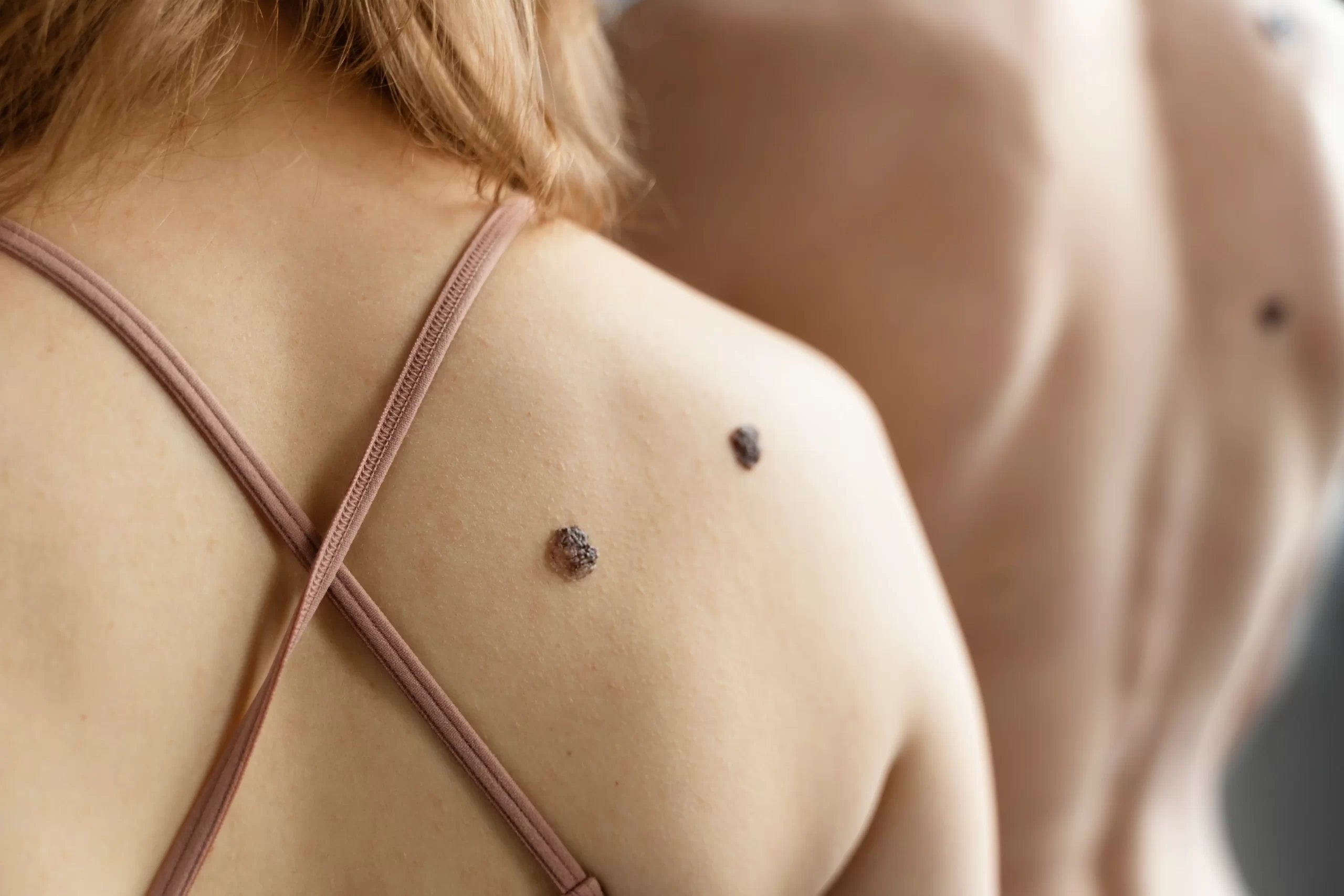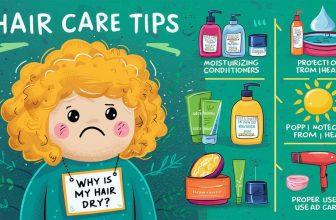How to Remove Skin Tags in One Night Without Pain

Skin tags are a common and harmless skin condition that can be unsightly and bothersome. These small, benign growths occur due to various factors, including friction, hormonal changes, and genetics. While skin tags are generally harmless, many individuals seek painless methods to remove them one night for aesthetic reasons. In this article, we will explore different natural remedies, over-the-counter solutions, do-it-yourself methods, as well as professional options for removing skin tags without experiencing pain.
Natural Remedies
Apple Cider Vinegar
Apple cider vinegar is a popular home remedy for removing skin tags naturally. Its acidic properties help to break down the tissue that makes up the skin tag, causing it to eventually fall off. To apply apple cider vinegar, follow these steps:
- Thoroughly clean the area around the skin tag with soap and water.
- Soak a cotton ball in apple cider vinegar and squeeze out any excess liquid.
- Place the cotton ball directly on the skin tag and secure it with a bandage or adhesive tape.
- Leave it on overnight, ensuring that the cotton ball remains in contact with the skin tag.
- In the morning, remove the cotton ball and rinse the area with water.
While apple cider vinegar is generally safe to use, there are a few precautions to keep in mind. Firstly, it is important to patch-test the vinegar on a small area of skin before applying it to the skin tag as some individuals may have sensitivities or allergies. Additionally, be cautious when applying apple cider vinegar near the eyes or genital area. If any irritation or discomfort occurs, discontinue use immediately.
Tea Tree Oil
Tea tree oil, known for its antiseptic and anti-inflammatory properties, is another natural remedy that can be used to remove skin tags throughout the night. Here’s how to use tea tree oil effectively:
- Clean the area around the skin tag with mild soap and water.
- Dilute tea tree oil by mixing a few drops with a carrier oil, such as coconut oil or olive oil.
- Apply the diluted tea tree oil to the skin tag using a cotton swab or clean fingers.
- Gently massage the oil onto the skin tag for a few minutes.
- Repeat this process two to three times a day until the skin tag dries up and falls off.
It’s important to note that tea tree oil should always be diluted before use, as it can cause skin irritation or allergic reactions if applied directly. If any adverse reactions occur, discontinue use immediately.
Banana Peel
Surprisingly, the humble banana peel contains enzymes that can help remove skin tags naturally in the night. Follow these steps for optimal results:
- Select a ripe banana and remove the fruit from the peel.
- Cut a small piece of the banana peel that is slightly larger than the size of the skin tag.
- Place the inner side of the banana peel onto the skin tag.
- Secure it with a bandage or adhesive tape to keep it in place overnight.
- In the morning, remove the banana peel and rinse the area with water.
While this method may take longer to show results compared to other natural remedies, it is gentle on the skin and can be a good option for those with sensitive skin.
Over-the-counter Solutions
Skin Tag Removal Patches
Skin tag removal patches are adhesive patches infused with ingredients that target the skin tag, causing it to gradually shrink and fall off. Here’s how to use them effectively:
- Cleanse the area around the skin tag with a gentle cleanser.
- Carefully remove the skin tags removal patch from its packaging, but it should be used over the night.
- Apply the patch directly onto the skin tag, ensuring good adhesion.
- Leave the patch on for the recommended duration, usually 24-48 hours.
- Replace the patch as necessary until the skin tag eventually disappears.
While skin tags to remove patches are generally safe to use at night, it’s important to follow the instructions provided and be cautious of any potential skin irritation or allergic reactions. If any discomfort or adverse reactions occur, discontinue use and consult a healthcare professional.
Freezing Kits
Cryotherapy, or freezing, is a common method used by dermatologists to remove skin tags. Over-the-counter freezing kits are available for home use, providing a convenient option for those who prefer to remove skin tags themselves. Follow these steps when using a freezing kit:
- Cleanse the area around the skin tag with a gentle cleanser.
- Hold the freezing kit applicator against the skin tag for the recommended duration, usually a few seconds.
- Repeat the process if necessary, following the instructions provided.
- Over the next few days, the skin tag should darken in color and eventually fall off.
It’s important to note that freezing kits may cause a mild burning or stinging sensation during application. If you experience severe pain, blistering, or any other concerning symptoms, discontinue use and seek professional medical advice.
Herbal Creams
Herbal creams specifically formulated for removing skin tags are available over the counter. These creams typically contain natural ingredients that work to gradually dissolve the skin tag. Here’s how to use them properly:
- Cleanse the area around the skin tag with a gentle cleanser.
- Apply a small amount of the herbal cream directly to the skin tag.
- Gently massage the cream onto the skin tag until it is fully absorbed.
- Repeat the process according to the instructions provided by the manufacturer.
When choosing an herbal cream, it’s important to compare different products and read reviews to determine their effectiveness. Additionally, follow the recommended guidelines and discontinue use if any adverse reactions occur.
DIY Methods
Dental Floss Technique: The dental floss technique is a common do-it-yourself method for removing skin tags. However, it is important to exercise caution and follow these steps carefully:
- Thoroughly clean the area around the skin tag with soap and water.
- Tie a piece of dental floss tightly around the base of the skin tag.
- Ensure that the skin tag is securely tied off and that the floss is tight enough to restrict blood flow.
- Leave the dental floss in place for a few days until the skin tag shrinks and falls off.
While the dental floss technique can be effective, it is crucial to be mindful of potential risks. If the skin tag becomes painful, inflamed, or shows signs of infection. It is recommended to seek professional medical assistance.
Scissors or Sterile Blade: Using scissors or a sterile blade to remove a skin tag is another DIY method that should be approached with caution. Follow these instructions to minimize risks:
- Thoroughly clean the area around the skin tag with soap and water.
- Sterilize the scissors or blade with rubbing alcohol or boiling water.
- Gently lift the skin tag away from the surrounding skin.
- Use the sterilized scissors or blade to snip off the skin tag at its base.
- Apply an antiseptic solution to the area and cover it with a clean bandage.
It’s important to note that this method carries a risk of bleeding, infection, or scarring. If you are uncomfortable performing this procedure yourself or if there are any concerns, it is best to seek professional medical advice.
Professional Options
Surgical Removal: For large or stubborn skin tags, surgical removal may be necessary. There are several surgical techniques available, including:
- Excision: The skin tag is cut out using a scalpel or surgical scissors.
- Cauterization: The skin tag is burned off using an electrical current or a laser.
- Cryosurgery: The skin tag is frozen off using liquid nitrogen.
Before undergoing surgical removal, it is important to consult with a dermatologist to determine the most appropriate technique. Pre-operative preparations and post-operative care instructions should be followed carefully to ensure optimal healing. It’s also important to consider the potential risks and costs associated with surgical removal.
Cryotherapy by a Dermatologist
Cryotherapy, performed by a dermatologist, is a reliable and effective method for removing skin tags. This non-invasive procedure involves freezing the skin tag with liquid nitrogen, causing it to die and eventually fall off. Here’s what to expect during cryotherapy:
- The dermatologist will cleanse the area around the skin tag.
- Liquid nitrogen will be applied to the skin tag using a specialized applicator.
- The burning sensation may be experienced during the procedure.
- The dermatologist will provide post-treatment instructions for proper care.
While cryotherapy performed by a dermatologist is generally safe, it may cause temporary redness, swelling, or blistering. It is important to follow the dermatologist’s instructions and report any concerning symptoms after the procedure. Some insurance plans may cover the cost of cryotherapy, but it’s important to verify coverage with the insurance provider beforehand.
Electrocautery or Laser Treatment
Electrocautery and laser treatment are two other professional options for removing skin tags. These methods involve using heat energy to burn or vaporize the skin tag. Here’s what you need to know:
- Electrocautery: This technique uses an electric current to heat and destroy the skin tag.
- Laser Treatment: Laser beams are directed onto the skin tag to break down the tissue.
Qualified professionals perform both electrocautery and laser treatment in a clinical setting. The recovery process typically involves keeping the area clean and applying an antiseptic ointment as advised. It’s essential to choose a qualified professional experienced in these procedures to minimize the risks involved.
In summary, there are various methods available for removing skin tags without experiencing pain. Natural remedies, such as apple cider vinegar, tea tree oil, and banana peel, can be effective options for those looking for gentle solutions. Over-the-counter solutions, including skin tag removal patches, freezing kits, and herbal creams, provide convenience and ease of use. DIY methods, such as the dental floss technique, scissors, or sterile blade. Tying off with a thread can be effective but should be approached with caution. For complex cases or concerns, professional options like surgical removal, and cryotherapy. When choosing a method, it is important to consider factors such as the size of the skin tag, personal comfort level, potential risks, and desired outcome. Additionally, if unsure or if there are any concerns. It is always recommended to consult with a healthcare professional for personalized advice.
FAQs
Q2: Are skin tags dangerous?
A: Skin tags are typically harmless and do not pose any health risks. However, some people may choose to remove them for cosmetic reasons or if they become irritated due to constant rubbing.
Q3: Is the one-night removal method safe?
A: The one-night removal method outlined in the article is generally safe for small skin tags. However, it's essential to ensure proper hygiene and disinfect the tools before use to minimize the risk of infection.
Q4: Can I perform this method on large or sensitive skin tags?
A: For large skin tags or those in sensitive areas, it is advisable to consult a healthcare professional for safe and appropriate removal.
Q5: What supplies do I need for the one-night removal method?
A: The supplies needed for this method include sterile scissors or nail clippers, cotton balls, rubbing alcohol, and a band-aid or medical tape.






